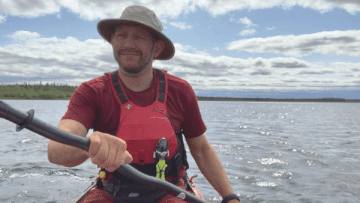There’s a military saying that goes, “Two is one, and one is none.”
The idea is that if you have a mission-critical item then it will inevitably malfunction, get misplaced or get smashed into a million pieces. So you need a backup.
This is really a corollary of Murphy’s Law, namely “Whatever can go wrong will go wrong”.
Once you involve Murphy you can’t have a single point of failure. Whatever happens, whatever breaks, whatever goes wrong, you must be able to keep the show going on.
The answer isn’t necessarily to take two of everything because that quickly becomes unwieldy. Instead you need to have redundant function, which means having more than one way to accomplish the same goal.
The same applies to martial arts. You can’t just have one defense against a certain strike, just one attack from a certain position, or one escape from a pin.
Redundant Options for Defense
When it comes to defense you can’t be a one trick pony. You can’t always just do the same thing because eventually you’ll run into someone on whom it doesn’t work. Or if you spar with the same people repeatedly then they’ll figure it out and take you apart.
We’ll start with an example from boxing, namely defending yourself against the straight right hand or the right cross.
This is a very common punch and you absolutely need to know how to deal with it. Fortunately there are a LOT of different things you can do; here are 19 counters to the straight right hand to get you started
I’m NOT saying that you need to master every right cross counter in the book – there just isn’t time and mental bandwidth for that.
But I AM saying that you should play with many different counters until you find out which ones work for you and then focus on 2 or 3 of them. You need to have redundancy built into your defenses.
The same principle applies to grappling.
You need to have a couple of escape options for each of the 6 major positions on the ground – guard, sidemount, kneemount, full mount, rear mount, and turtle – because you can’t guarantee that any one escape will always work.
(The six basic positions on the ground are covered in detail in the Roadmap for BJJ book, available for free here.)
For example, the mount is one of the worst positions you can get caught in in a fight and you need at least two different escapes from it
Here are some of the mount escapes I use most often. I don’t care which of the following you do so long as you train more than one of them:
- The ‘Upa’ or bridge and roll escape (covered in this article here),
- The leg trap escape (covered on Youtube here),
- The bridge and stiffarm escape (covered here),
- The hip escape (covered here)
- Or any other mount escape that works repeatedly in BJJ or MMA competition.
When it comes to defense, two is still one, and one is still none.
Redundant Options for Offense
If you only have one offensive move then you might run into an opponent who’s really good at countering your one move (or just be impervious to it – it happens!) and now you’ll be in a terrible situation.
So you also need multiple ways to accomplish the same goal in offense.
No boxer just throws one punch. No wrestler just has one takedown. No fencer just has one feint.
Let’s get granular with an example from jiu-jitsu.
The armbar is one of the most common attacks in jiu-jitsu, and it’s instinctive for your opponent to defend this jointlock by linking his hands together and holding on for dear life. This can be very frustrating, especially if he’s bigger and stronger than you.
Fortunately there are armbar grip breaks, lots of them! To get you started here are 10 different ways to separate the arms, most of which I’ve experimented with at some stage of my career.
But wait, there’s more!
Shortly after putting out the above video with 10 of my favorite armbar grip breaks I realised I had left a few out. I then released a second video with 10 more options to accomplish the same goal of separating the guy’s hands en route to the armbar…
Now you have 20 possible grip breaks to finish the armbar. Not all are going to work for you, and besides, having that many options to choose between will actually slow you down.
If you want to get better at breaking through defensive armbar grips you should watch all the different options, select a handful that look interesting to play with, and then narrow down that selection until you have at least two that work great for you.
Most Olympic level Judoka only have 2 to 4 throws after all.
You need a few different ways to attack in every situation…
- You need to to know more than one way to hit a guy with a stick.
- You need to be able to improvise a new weapon if your stick breaks.
- If it makes strategic sense you need more than one way to take a guy down to the ground and,
- More than one way to keep him pinned until the cops get there.
- More than one way to get back to your feet if staying on the ground makes no sense,
- And so on.
It’s all about having options to deal with an unpredictable world.
Redundant Capabilities in the Wilderness
Let’s look at a couple more examples from an entirely different realm of experience – solo wilderness canoeing.
I occasionally do canoe trips out into remote regions of the Canadian North. And in the summer of 2019 I completed a solo journey of 1,000 miles in 41 days that ended on the shore of Hudson Bay, well north of the treeline (click here for some pictures and rough field notes of that trip).
On a trip like this, where multiple weeks go by without seeing a single human soul, equipment choice was critical.
Paddles are clearly important on a paddling trip, and so I brought three of them…
- A single-bladed lightweight ZRE carbon fibre bent shaft canoe paddle for flatwater,
- A heavy duty single-bladed straight shaft canoe paddle for whitewater, and
- A lightweight folding double-bladed carbon fibre kayak paddle.
Having 3 different paddles also allowed for flexibility to adapt to changing conditions.
Straight shaft paddles are better in whitewater because you can easily use either side of the paddle blade. Bent shaft paddles give you serious biomechanical advantage for padding on flatwater, And having both canoe and a kayak paddles gave me options in case a strain or injury made one style of paddling impossible.
But it also gave me redundancy of function. If I lost one paddle and broke the other I would still have a way to get across lakes or down a river.

My beautiful bent shaft paddle had been my Plan A for driving my boat across 1000 miles of lakes and rivers on this trip.
So when that paddle snapped while eddying out into the current below a waterfall on the 6th day of travel it wasn’t the end of the world. Having the other two paddles in the boat gave me some redundancy and ended up saving the trip.

I didn’t have three of the same paddles with me, but I did have three ways to accomplish roughly the same function.
In fact I tried to have more than one way to accomplish all the critical tasks on this journey…
- Accurate navigation was an absolute necessity, so I carried 1:50,000 scale AND 1:250,000 scale topographical maps AND also had maps on my Garmin GPS as long as my solar panel could keep it charged.
- For firemaking I carried a lighter AND a ferrocerium fire starter rod in my life jacket, and then had another lighter and box of matches hidden in every waterproof bag in the boat.
- I had a belt knife on my hip AND a river knife attached to my life jacket AND another knife in the leatherman multitool stashed in my repair kit.
- In emergencies I could communicate with a satellite phone AND the satellite messaging function of the Garmin GPS AND could have connected my phone to a satellite dish to send an email.
- For shelter I had a great tent (a Hilleberg Keron 3) with a repair kit AND a silicon-coated nylon tarp that I could camp under in a pinch.
- I had a sleeping bag AND enough warm clothing to avoid hypothermia if the sleeping bag was lost or soaked.
- To protect my food against bears I divided it into two different bags and every night I would stash them in the bush hundreds of feet apart. If a bear found one bag and tore it open I would probably still have enough food to survive in the other bag.
- To protect myself against black, grizzly and polar bears I practiced impeccable camp hygiene AND had a bear perimeter alarm AND carried a 12 gauge shotgun with slugs and 00 buckshot.
Each one of those examples speaks to having more than one way to accomplish a mission-critical goal, be that navigation, firemaking, cutting things, communication, shelter, warmth, or food.
Why should martial arts or life be any different?
Do you only have one way to escape the mount in jiu-jitsu? Can your whole business get shut down if one critical employee gets hit by a bus? Will your entire 1,200 page novel be lost if your computer’s hard drive crashes?
Find those single points of failure and then figure out how to build redundancies built into your plan. You don’t want one tumbling domino to spell disaster for your entire operation.
Stephan
